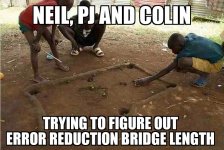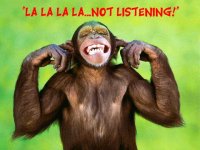Colin, are you sure about this? Seems to me that with longer distances between CB and OB, swerve back to the original aim line is going to have more effect, so you'd want a longer bridge length with longer shots to get a little more deflection offline and allow for that swerve cancellation. This is how I've been doing it, and it works for me.
Now if you're talking about shots hit firmly enough to not have any swerve, I'd think that bridge length should be constant no matter the CB-OB distance.
I could be missing something, so feel free to educate me.

As an aside, when working with a pivot point bridge length with a
closed bridge, make sure to closely examine your bridge and where exactly the cue pivots in it in both directions.
For example, with my closed bridge, pivoting to right english pivots at the base of my left index finger, making the bridge length effectively longer than pivoting with left english, which pivots more around the middle knuckle of my middle finger. That's about a 1.5" difference for me. So my personal mnemonic with a closed bridge is "righty tighty, lefty loosey" when estimating bridge length, so I use a slightly shorter (perceived) bridge length with right english shots.
-Ron


